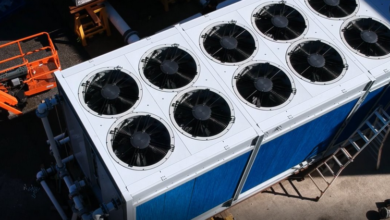The post-pandemic world is experiencing more frequent natural disasters and growing urban areas, meaning more people are not just near sources of pollution, but are more vulnerable to contamination be it manmade or nature’s own. That puts quite a fine point on the need to discuss indoor air quality.
And the price of poor indoor air quality is clear. Poor IAQ can lead to everything from chronic headaches and trouble concentrating to both long and short-term health problems. Plus, inefficient and ineffective temperature and humidity management can support rather than suppress the spread of airborne contaminants (not to mention mildew and mold), easily turning any building into a petri dish.
Good ventilation is key to proper indoor air quality, meaning HVAC systems that offer ventilation control is ideal as these systems allow for introducing and distributing outdoor air, maintaining acceptable temperature and humidity and filtering airborne contaminants including exhaust fumes, viruses, chemicals and even odors emitted from general trash.
In addition to these fundamental strategies, helping customers battle region-specific environmental concerns has become increasingly important. In the Pacific Northwest, for example, wildfire season threatens IAQ every year. We have worked with several customers to install activated carbon filters in the months prior to fire season. These filters help prevent smoke from entering buildings, thereby maintaining a higher level of indoor air quality during a time of year when it is inarguably at its worst. Mechanical ventilation like ERVs, HRVs and DOAS all help moderate air pollution (smog, pollen, smoke, etc.), control humidity, and condition the air before it’s inhaled.
New HVAC systems optimizing energy efficiency & IAQ
The opinion that IAQ and energy efficiency cannot coexist is outdated. Thanks to technology and the Internet of Things, HVAC systems can become stronger, faster, smarter and prioritize both IAQ and lower energy consumption in equal measure.
Sensors are more intelligent than ever; buildings can adjust everything from humidity and temperature to whether or not windows are open and lights are on based on occupancy and use rates. The result? Precise allocation of energy as it’s needed, which is good for the environment, good for occupants and certainly desirable for any business’ bottom line.
That said, having an up-to-date HVAC system is only part of the solution. At the end of the day we, and no shortage of other quality contractors, cannot overstate the value of making sure that HVAC assets are regularly and adequately maintained. Regularly conduct routine maintenance that includes the inspection of ductwork, cleaning, adjusting and checking or changing filters.
Think of robust maintenance as part of capital planning and risk management strategies. Coordinating energy and quality needs with customers can help identify improvements, upgrades and whole system changes to improve a building. These efforts can identify programs and incentives that help customers get more while paying less.
HVAC systems are the lungs of a building (to say the least). What passes through these systems literally becomes the air we breathe. From limiting the spread of infectious diseases to increasing resilience to allergies and more, focusing on indoor air quality (together with energy efficiency) is how to build and maintain healthy places to live, work and play.
Jon Klug is building and automation project sales representative at Harris.
Shelby Roberts is solutions consultant at Harris.



